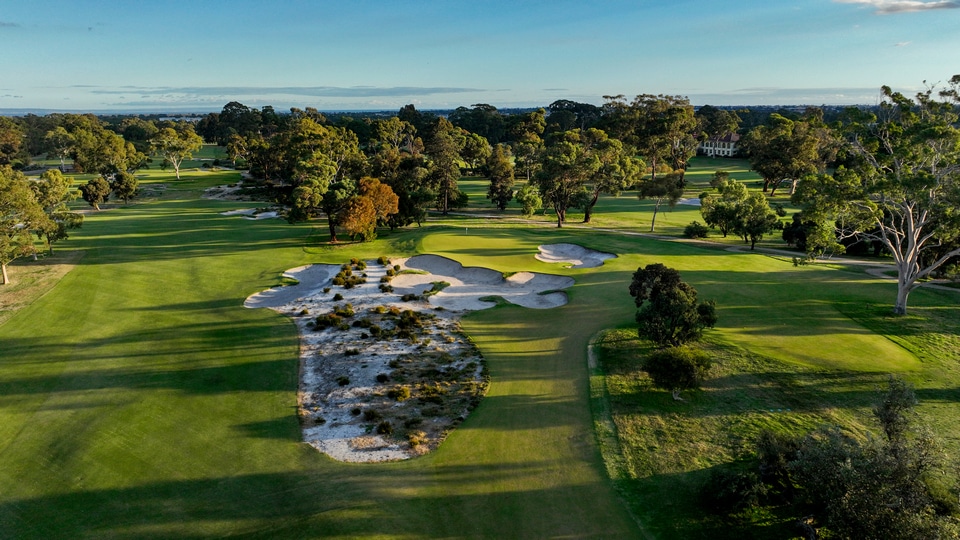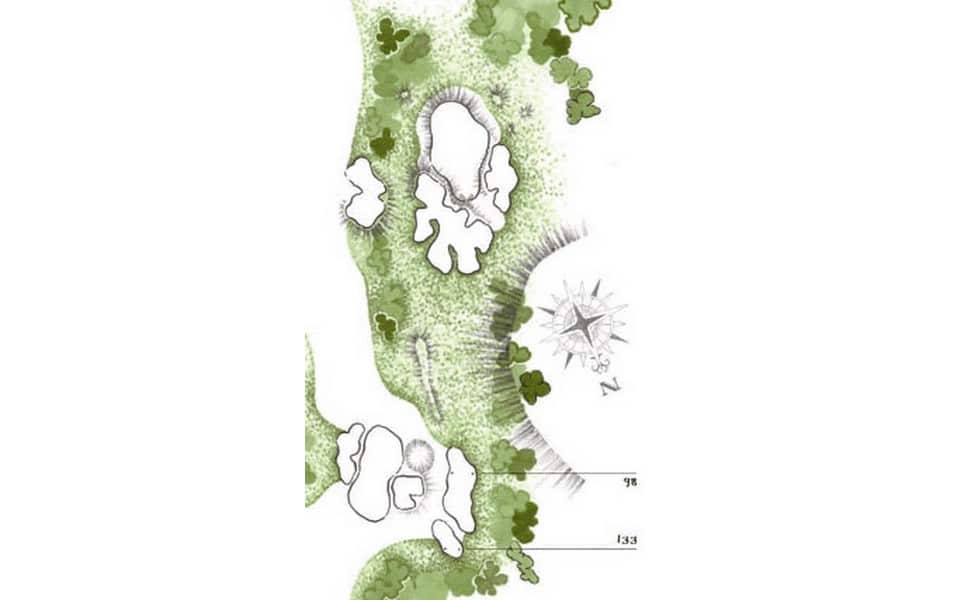Commonwealth Golf Club (1921)
15th Hole / Par-3 / 160 yards
Oakleigh South, Victoria, Australia
Architecture: Sam Bennett (1921) with revisions by Charles Lane (1928), Sloan Morpeth (1938 and 1967), Kevin Hartley (1991-93), Michael Clayton & OCCM (2006-2019), Brian Slawnik and Tom Doak (2021-). Present configuration dates back to 1967 when club extended 10th and 11th holes after acquiring land.
*
Nothing elevates more joy or indecision than playing an engaging short par-3.
Why?
The lack of distance invites the mind to believe a possible birdie is there for the taking. However, on a well-designed short hole it is that seduction in thinking that can equally mean a quick bogey or even worse.
Those dropping guard can be in for a rude awakening.
The Sandbelt region of Melbourne is home to a stunning collection of well-designed courses. The strength of Commonwealth comes from an array of compelling greens which provide a number of devilish riddles to solve.
Mike Clayton, former touring professional from Australia, writer and golf course designer summarized the appeal of Commonwealth’s 15th.
“Charles Lane and Sam Bennett – made such incredible greens complexes dominated in most cases by the unique Sandbelt bunkers, the look of which is almost impossible to replicate elsewhere, said Clayton.
“Like the 10th at Kingston Heath and Commonwealth’s 9th hole, the 15th takes up almost no land, something important on a relatively small site.”
Quality routing is always a test in the creation of any golf course site. Getting the most out of a given property and doing so without replication is no easy task.
Commonwealth’s 15th is tucked into a sliver of available land.
When arriving at the tee the hole rises ever so slightly uphill and this mandates a clear understanding of the proper club to select.
Two large bunkers on the right serve as fierce protectors for the 6,000 square-foot target. The visual intimidation when seeing the green from the tee can make the available landing area seem much smaller.
Clayton adds, “It’s not a long shot but rather one demanding of a well-flighted, accurate short iron to one of the smaller greens on the course.”
The hole plays north to south. Wind patterns can change during the course of a year. In winter the general pattern is a headwind. In summer, when blowing from the north, the green can be elusive to hold.
Tom Doak in his 1996 book, The Confidential Guide to Golf Courses, summarized how the crafting of the holes is indicative of what one finds when playing Commonwealth.
“Construction of the course was left to a professional in the field — Vern Morcom, the original Royal Melbourne superintendent, who mastered the secrets of natural-looking construction as taught to him by Dr. MacKenzie. Commonwealth’s marvelous greens and bunkers are testimony to his skill.”
***
For more info go to:
Photos courtesy: Gary Lisbon / aerial and David Scaletti / ground shot




